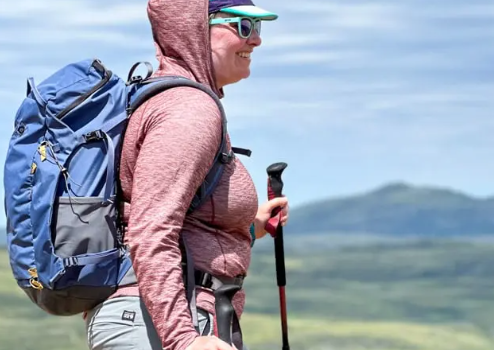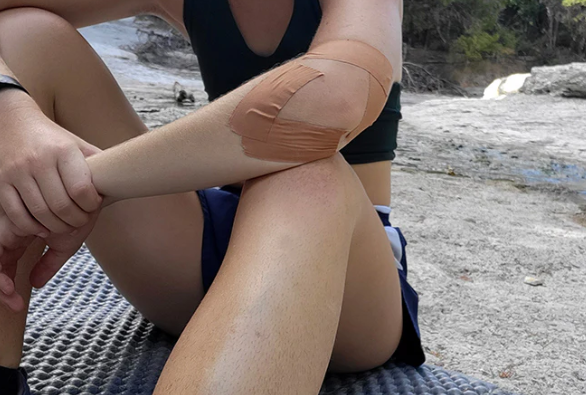
When heading out on a hiking adventure, it’s easy to feel excited and ready to hit the trail, but proper preparation is crucial for your safety. One way to ensure you’re always ready for the unexpected is by carrying the ten essential items. These aren’t just a list of must-haves—they are vital tools to help you navigate, stay safe, and survive if something goes wrong while you’re in the wilderness. Whether you’re a beginner or an experienced hiker, having the right gear can make all the difference.
What Are the Ten Essentials?
The “Ten Essentials” are a collection of items that will keep you prepared for a variety of situations that could arise during a hike. These items are crucial not only for safety but also for ensuring that you’re equipped to handle emergencies.
While you might not always carry every item on every hike, especially for short, familiar ones, it’s recommended to bring them on longer, unfamiliar hikes or when you’re venturing into areas with no cell service. I always ensure to carry them when I’m in unknown or challenging terrain.
1. Navigation
Knowing where you’re going is essential, and digital tools alone aren’t enough. Although apps like AllTrails or GaiaGPS are helpful, nothing beats the ability to read and understand a topographical map. Maps help you situate yourself based on the landscape and are crucial if your phone dies or loses signal.
While I always carry a GPS device, such as the Garmin inReach Mini with offline maps from GaiaGPS, I also have paper maps for more detailed or off-trail hikes. A compass is also a valuable backup if things go awry, but it requires you to know how to use it effectively in conjunction with the map.
Tip: If you use a phone for navigation, don’t forget a power bank. I use the Anker 10,000 mAh battery for shorter trips, which provides a good balance of weight and efficiency.
2. Illumination
Even if you’re planning to hike during daylight hours, unexpected delays can leave you needing light. A headlamp is the best choice here because it keeps your hands free. I recommend the Nitecore NU25 for its light weight, rechargeable battery, and multiple settings, including a red light to preserve night vision.
Tip: Carry a small backup battery for emergencies or use your phone’s power bank to recharge your headlamp if needed.
3. Sun Protection
Sunburn can be a real risk on the trail, especially if you’re hiking in exposed areas. Protecting your skin is essential not only to avoid pain but also to prevent long-term skin damage. I make sure to wear a sun hoodie like the REI Sahara Shade Hoodie, which provides protection without the need for constant sunscreen reapplication.
Don’t forget a good sunscreen for your face and body—Supergoop is my go-to for a lightweight, non-greasy feel. A hat and sunglasses are also a must for keeping the sun out of your eyes.
4. First Aid Kit
While it’s unlikely you’ll face severe medical issues on a hike, minor injuries like cuts, blisters, or sprains are common, and a first aid kit is necessary for treating them. I keep a small, personalized kit with essentials like Leukotape for blisters, Ibuprofen, and Benadryl. It’s also smart to learn basic wilderness first aid or even take a course if you plan to go on longer or remote hikes.
5. Knife and Gear Repair
Accidents happen, and gear can break. Whether it’s a torn tent or a broken strap, having a repair kit is important. I always carry Tenacious Tape for quick fixes and a small knife like the Spyderco Ladybug to cut cords or patch materials. For more complex repairs, I also carry some basic cordage for makeshift repairs.
6. Fire
If you’re stuck overnight, building a fire can be life-saving by helping you stay warm, signal for help, or purify water. I carry a Bic lighter as my primary fire starter, along with waterproof matches as a backup. For added warmth, I also carry a small stove to boil water.
7. Shelter
On a day hike, an emergency shelter may not be top of mind, but it could be the key to surviving an unplanned night outdoors. A simple emergency blanket or bivy sack can provide enough shelter to keep you warm in a pinch.
8. Extra Food
When you’re hiking, things don’t always go as planned, and having extra food can help you stay energized. I always pack some extra granola bars or other ready-to-eat snacks in case I’m delayed. Don’t forget to carry a full day’s worth of food, but also be prepared for the unexpected.
9. Extra Water
Dehydration is one of the biggest risks on the trail, so always carry enough water for the hike. I use a Platypus Quickdraw filter to purify water from natural sources along the way. It’s small, efficient, and works with standard bottles. On longer hikes, I carry additional Aquatabs as a backup.
Tip: If you’re hiking in a water-scarce area, make sure you have enough water to last the entire hike.
10. Extra Clothes
Weather can change quickly, especially in alpine or high-altitude areas. I always pack extra clothing, like an insulated jacket, rain gear, and warm layers, especially if I’m venturing into unpredictable environments. A down jacket or synthetic alternative is essential for keeping warm in colder temperatures.
For those longer or unexpected nights, extra clothes help you stay comfortable and safe while waiting for help or when heading back to the trailhead.
Bonus Items You Might Want to Consider
Whistle
If you find yourself lost or needing attention, a whistle can be a great tool. Most packs come with a small whistle attached to the chest strap, but a standalone whistle offers more volume and can help attract rescuers.
Trowel
When nature calls, a small trowel is essential for digging a proper cathole. Be sure to carry a Ziploc bag for packing out used toilet paper if necessary. It’s all part of Leave No Trace principles, helping to keep our wilderness areas pristine.
How to Carry Your Ten Essentials
The best way to carry the ten essentials is in a well-organized day pack. These typically range from 10L to 30L in size and are designed for hiking, offering better padding and compartments than regular backpacks. It’s a good idea to start with any pack you already own to get a feel for what works best, and then upgrade as needed based on your personal preferences.
By following these guidelines and packing the ten essentials, you’ll be ready for any situation that arises while hiking. Always be prepared, and take the necessary steps to ensure your hike is safe and enjoyable. Happy hiking!








